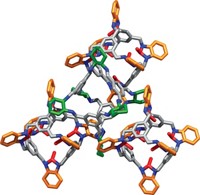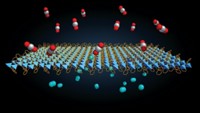Advertisement
Grab your lab coat. Let's get started
Welcome!
Welcome!
Create an account below to get 6 C&EN articles per month, receive newsletters and more - all free.
It seems this is your first time logging in online. Please enter the following information to continue.
As an ACS member you automatically get access to this site. All we need is few more details to create your reading experience.
Not you? Sign in with a different account.
Not you? Sign in with a different account.
ERROR 1
ERROR 1
ERROR 2
ERROR 2
ERROR 2
ERROR 2
ERROR 2
Password and Confirm password must match.
If you have an ACS member number, please enter it here so we can link this account to your membership. (optional)
ERROR 2
ACS values your privacy. By submitting your information, you are gaining access to C&EN and subscribing to our weekly newsletter. We use the information you provide to make your reading experience better, and we will never sell your data to third party members.
Materials
Salty Coronene Sorts Carbon Nanotubes
Scientists take advantage of organic salt’s π interactions to separate metallic and semiconducting nanotubes
by Bethany Halford
April 12, 2010
| A version of this story appeared in
Volume 88, Issue 15
Taking advantage of charge-transfer interactions, scientists in India have developed a new method for separating metallic and semiconducting single-walled carbon nanotubes (J. Am. Chem. Soc., DOI: 10.1021/ja100190p). Both types of nanotubes are produced in SWNT synthesis, and finding a practical way to sort them is a major challenge nanotechnologists face in exploiting the materials. The separation process developed by C. N. R. Rao and coworkers at Jawaharlal Nehru Centre for Advanced Scientific Research, in Bangalore, takes advantage of π-π interactions between the nanotubes and the polycyclic aromatic compound potassium coronene tetracarboxylate. When the researchers mix a 10-mM solution of the coronene salt with a raw SWNT product mixture, the metallic tubes precipitate and the semiconducting tubes remain in solution. Both the concentration of the coronene solution and the interaction time are critical to sorting the nanotubes, the scientists point out. The method avoids cumbersome ultracentrifugation, which is used in a number of other SWNT-sorting methods, the researchers note, and the technique “is amenable for large-scale separation and can be used as a routine laboratory procedure.”





Join the conversation
Contact the reporter
Submit a Letter to the Editor for publication
Engage with us on Twitter